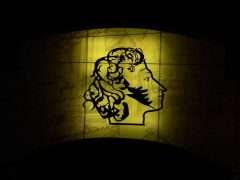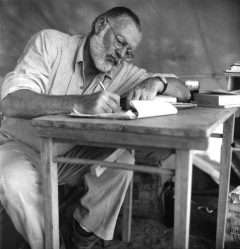Personal signature is an essential element of a document. Without a signature, no document is considered valid, because with it we confirm everything that is contained in this document. From this point of view, we can say that the document is created not only by officials, but also by us.
Personal signature history
A personal signature has a long and difficult history. It arose as a sign of power, that is, primarily as the signature of the lord, the king. Moreover, for a long time it was inseparable from other signs of power, such as the cross, the royal seal. The tsarist seals are better than other evidence. Long before our era, they confirmed decrees and other important decrees of the rulers of Mesopotamia, Egyptian pharaohs. Such a direct connection of the signature with power functions determines its indifference to the social status of the person who signs the document. And now special significance is attached to the signature of a person endowed with authority. Given the gradual spread of the custom to sign texts among people with a lower status, we can say that the history of the signature is the history of its decline and secularization. In addition, the signature as a spelling of one’s own name is associated with the history of acquiring surnames, which also first appear in persons with high status. Although it should be noted here that the monarch’s signature is, as a rule, a reproduction of a name, not a surname, in fact, this will differ from the signature of ordinary people. We can say that the history of the signature is part of the history of manipulations with personal names.
Signature of the cross
The cross as a replacement for the signature is often associated with illiteracy and low social status, but as a signature, he made an interesting evolution: the signature begins with the image of the cross, is combined with it and replaced by it. Crosses were placed on contracts and meant a signature “worthy of all trust”. The decisions of church cathedrals were also fastened with the image of the cross. In other words, in especially important documents, instead of a name, they put a cross or even three crosses. Putting such a signature is more responsible than writing your name, because it meant to vouch for the name of God. Thus, crosses as a signature were not necessarily set out of illiteracy. This is also evidenced by the fact that in the Middle Ages in many countries of Europe they put an end to important documents and put their full name next to him. The signature of the cross deprived her of individuality, but endowed this act with sacred power. The cross as a signature is more like an oath. Only in the late Middle Ages, from about the sixteenth century, did European traditions spread the view that it was not worth using the cross of God for commercial documents, and they began to sign them in their own name.
The use of a fingerprint became possible after the assumption of the uniqueness of a papillary pattern in 1877 and the emergence of fingerprinting in forensics in the late XIX – early XX centuries. In the Russian tradition, fingerprints as a form of identification were used in investigative practices, but not in identity cards. For example, judging by the case of the murder of the Morozov brothers, in the Soviet investigative documents the illiterate did not sign with a cross, but left a fingerprint.
The custom to subscribe to a document and, more broadly, a text was formed in the Russian cultural tradition late and under the clear influence of the European tradition, although the “laying on of hands” is already found in early monuments. Only from the XVIII century can we talk about the widespread practice of signing documents with your signature. In official documents, the personal signature included the full name, surname (nickname), and the rank was often indicated. In this composition of the signature, its estate character naturally manifests itself. The personal signature of the nobles meant the complete spelling of their first and last names. In friendly communication they signed with one surname (for example, A. Pushkin, or even easier – Pushkin). Literate commoners signed their patronymic (Petrov, Ivanov), and illiterate usually put a cross. They tried to sign business papers with full naming, including titles and positions. For example: “Dimitry Nikolaevich Kamenev, Vologda merchant”.
A sharp change in the style of personal signature occurred after the revolution. Firstly, to sign with one surname has become much more common, which corresponded to new appeals such as “citizen Ivanov”, “comrade Petrov”. Secondly, in the 1920s and 1930s, another type of signature began to take shape, representing monograms from the first letters of the name, surname and patronymic, for example, VIL – Vladimir Ilyich Lenin. Monograms of this kind (often in the form of monograms) certainly existed before, but after the revolution they began to be perceived as abbreviations in the general stream of the region that swept Russia from the 1920s to represent all the names of institutions and organizations in the form of abbreviations.
General trends were expressed not only in a kind of decline in signature, but also in a gradual distance from writing your first and last name. Of course, even now you can see “honest” spelling of your surname as a personal signature, but quite often signatures lose any connection with their “prototype” and represent an arbitrary (in any case, from an external point of view) sign or set of signs. This tendency is not difficult to trace by dictionary definitions of personal signatures. If in the Dahl dictionary (1860s) it includes the name, surname (nickname), rank and so on, then in the Soviet Explanatory Dictionary of Ushakov we read: “Signature is the name of the person, author, written by him personally under the text of the document, letter”. Further, in all dictionaries, including legal ones, a personal signature refers exclusively to a surname, but, of course, it is given an appropriate meaning, which was not indicated in the explanatory dictionaries. Here’s what it looks like, for example, in the Great Law Dictionary of 2001: “Signature – handwritten surname, obligatory requisite of official documents (act of examination, conclusion) and legal acts (law, act of management, court decision, contract). The signature of the proper persons in the presence of all other required details gives legal force to the documents and legal acts ”.
If we take into account that one of the main meanings of the signature is an indication of the individuality (uniqueness) of the author with the possibility of his identification, then the disappearance of the name, at first glance, significantly undermined its purpose. The steady movement towards illegibility of the signature makes the task of identification completely impossible. Meanwhile, it is precisely such signatures that become the model of expression of individuality. We can say that the property of individuality and uniqueness began to be associated not with the completeness of the reproduction of the name and surname, but with a unique graphic pattern. Just the loss of the signature of visible connections with the name and surname to a greater extent than their reproduction, expresses its uniqueness.
So, the signature, as a way of expressing identity, is full of diverse meanings. It is perceived as a sign of adulthood and social usefulness, with it is directly associated with the status of the individual and power relations. Mastering the signature is a good practice of self-control and entering the world of official relations. The functioning of a document signature is associated not only with the problem of identification: it operates in the space of reliable and false, true and false. An alienated signature becomes a kind of substitution of the owner and acquires an independent meaning. Signatures show their own hierarchy. The “main” for each individual person becomes his passport signature, and in the space of interactions – his own hierarchy of signatures, correlated with the social hierarchy.
Source: arzamas.academy
Good luck in finding.






